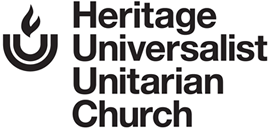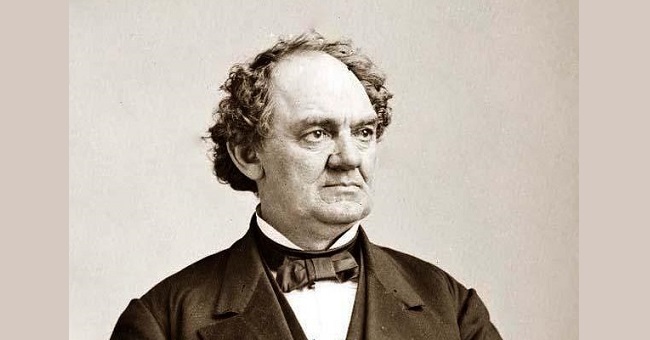by Mike Roberts, Church Historian.
It has been mentioned in several previous archive articles that the First Universalist Church of Cincinnati suffered through financial difficulties from the 1840’s until its move to Walnut Hills in the late 1890’s. In 1842, the church built a new edifice on Walnut Street between 3rd and 4th and the commitments to that project had placed the church in economic peril. Many pew rents, which were the primary source of income for the church, were delinquent and the church had borrowed heavily for the construction. Pastor Abel Thomas proposed a partial solution to the problem. He noted that several loans taken out by the church were at high interest rates that were crippling finances. He therefore proposed to pay off the loans with $5,000 obtained through a low interest loan from a rich friend in New York. That friend was P.T. Barnum. Beginning in 1845, payments to P.T. Barnum are shown in the church board minutes every six months for $150.00. This was the interest on the loan. While this did ease the burden on the Society, it in no way solved the issue of too little income for the church to get out of debt.
Then, in 1849, Barnum contacted the church and asked that the loan be repaid in full. The reason for this was that Barnum was attempting to raise the gigantic sum of $100,000 to bring the Swedish Nightingale, Jenny Lind, to America. At this time, Lind was recognized as the greatest singer in the world and her asking price to tour America was enormous. The Society was in no position to pay off the loan. They contacted now former minister, Abel Thomas, in Philadelphia for help. Thomas devised a plan to help his friend Barnum and yet keep the church afloat. That plan was for him to pay off Barnum himself and assume the loan to the church. From this point on, regular six month payments to Thomas are shown in the records as interest on the loan. In his autobiography, Barnum heaps praise on his friend Abel Thomas as providing the final $5,000 that allowed him to reach his goal and contract with Miss Lind for her tour.
The tour was a huge success. It is estimated that Barnum made close to a half million dollars on the tour. During the tour, Lind approached Barnum and asked that she be let out of her commitment to him so that she could add additional dates and turn the profits more in her favor. At that point, Lind had performed 93 concerts, Barnum had made his fortune and Lind had become the darling of the country. Barnum agreed to the arrangement. Lind went on to sing in 40 more venues but it should be noted that Lind was not trying to amass her own personal fortune. She was deeply committed to improving the plight of the poor in her home country of Sweden and most of the profits from her tour went to building schools for the poor families of her native land. She also donated to many charities in the United States.
On the tour, Lind did perform in Cincinnati in April of 1851. She arrived by steamboat from Louisville and performed at the National Theater on Sycamore. The city went crazy with excitement before, during and after her performance. While it is noted that Barnum accompanied her to Cincinnati, there is no evidence he visited our church while he was here. Barnum was a committed Universalist. The story is told that when he formed the Barnum and Bailey Circus, he always had a sign touting Universalism held by an elephant in its trunk during the opening parade.
Barnum remained close friends with Reverend Abel Thomas. Thomas performed the funeral service for Barnum’s beloved wife, Charity, and P.T. and Abel were close neighbors at their cottages in Bridgeport, Connecticut.
Image: P. T. Barnum, a Universalist.

